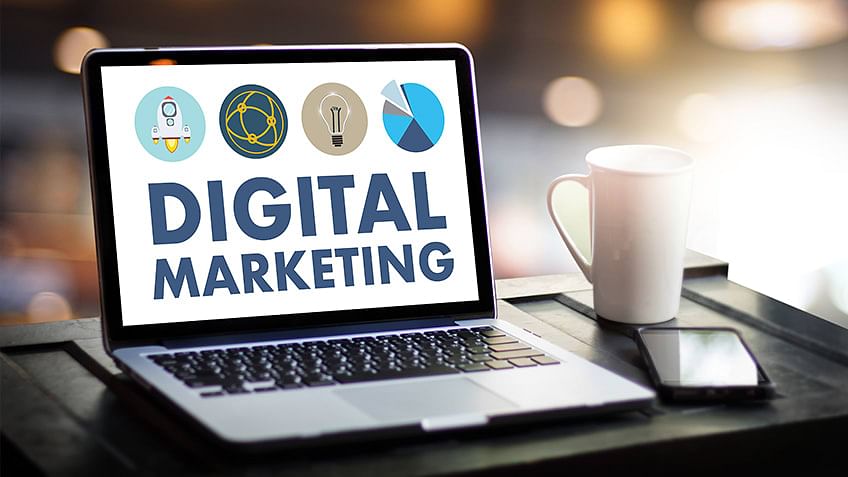Grab the closest electronic device, and all of the data you’ll ever need, approximately almost any product or service, can be at your fingertips within seconds. According to one survey, nearly half of e-commerce site visitors come from cell customers, and 56% of online buyers will pull up client reviews earlier than they buy.
 What that tells us is that comfort is a big deal for customers. Today, a small percentage of humans don’t use the net in any respect. That’s excellent news for virtual entrepreneurs, but it also begs very critical questions:
What that tells us is that comfort is a big deal for customers. Today, a small percentage of humans don’t use the net in any respect. That’s excellent news for virtual entrepreneurs, but it also begs very critical questions:
1. Does conventional advertising nevertheless have a place in consumerism?
2. Does it make the experience to put all your budgeting bucks into virtual advertising?
What hasn’t been modified is that marketers still ought to locate that sweet spot between their advertising and marketing budgets and an attractive conversion fee. Understanding the warfare between traditional and digital advertising and marketing is extremely valuable in placing your budget to net the best return on investment.
What Is Traditional Marketing?
When leafing through your favorite magazine, you’re sure to be struck by a flashy ad, and you would possibly now and again find yourself chuckling over a silly television commercial. These sorts of businesses, alongside unsolicited mail postcards, telemarketing, and free marketing, nevertheless take hold of our interest.
The hype over the Super Bowl advertisements tells us that traditional marketing nevertheless works. But at what price? Traditional advertising calls for lots of repetition and consistency. Over time, that can feel like a whole lot of cash.
The finances are particularly concerning, considering that conventional advertising only semi-targets a target audience. Surveys are one approach to finding out what drives customers’ attitudes and behaviors. Still, they can also be misleading because clients might even respond in ways that don’t correctly replicate their buying conduct.
How Digital Marketing Solves These Concerns
One of the essential advantages of virtual marketing over conventional advertising is that the analytics provide entrepreneurs with an in the back of-the-scenes observe what customers are thinking and the way that interprets what they search for on the internet and the way they navigate websites.
Digital advertising and marketing efforts connect to customers through more than one channel, which can be visible using entrepreneurs as having less risk than conventional advertising. Digital marketing efforts additionally take advantage of inbound advertising and marketing — the customer comes to your door. Understanding the route of your customers’ shopping for behaviors helps you to solve their issues quicker, allows for better interaction, and can, in the end, help you in building authority in your area of interest market.
Dashboard analytics allow me to trace my customers’ behavior in real-time to measure outcomes speedily. These consequences provide me with infinite methods to tweak my strategies. Furthermore, virtual marketing can create commercials that might be interactive, customized to the consumer, geographically centered, and more likely to be seen by using the desired audience — areas where conventional advertising falls brief.
Transitioning To Digital To Match Consumers’ Habits
In my studies to examine more closely how to stretch my advertising and marketing greenbacks, I ran across these statistics:
• Just over 60% of human beings check their Facebook page as a minimum as once a day.
• According to Shopify, 66% of the company’s Black Friday and Cyber Monday income has been made using mobile telephones.
• Ninety-seven percentage of commercial enterprise-to-business (B2B) marketers desire LinkedIn for advertising.
• Marketers plan to spend more on virtual than non-virtual within the subsequent five years.
What I’ve found out is that the excellent method for me is to invest a maximum of my marketing dollars in virtual marketing while leaving a bit of room for effective conventional advertising strategies.
Combining Traditional Marketing And Targeted Digital Strategies
A conventional paint can cost masses or maybe lots of greenbacks, which doesn’t give much publicity to your marketing finances. When I examine that with the price of Google display ads, for which I get charged in keeping with click rather than per impression, I’m reaching a number of my target customers at 0 cost. The motives for the popularity of virtual marketing are legitimate. It is a greater effective method for focusing on and segmenting a purchaser base.
I’m not prepared to kick traditional advertising to minimize absolutely, however. Billboard commercials are convincing to attract commuters and vacationers who are more centered on the street than their cellular telephones. And as long as the Super Bowl continues to air, there could be lots of banter over the light commercials.
In a few industries, relying on consumer personas, traditional advertising and marketing is a must. When I transitioned into running in residential care, I used conventional advertising and marketing, including print flyers with information about private care offerings. Why? Because my client personas have been seniors and child boomers — folks who often nonetheless relied on print media. In my opinion, the quantity of your budget that must be assigned to standard advertising and marketing depends on the enterprise that you are running and the way your client personas behave.
My philosophy at the debate over traditional versus virtual advertising is that virtual advertising and marketing gives me excellent exposure for my advertising and marketing dollars, so that’s where I’ll hold to invest the largest percent of my budget. I’ll also leave a little room in my price range for a few traditional advertising and marketing techniques, just as I leave a piece of room for dessert.











